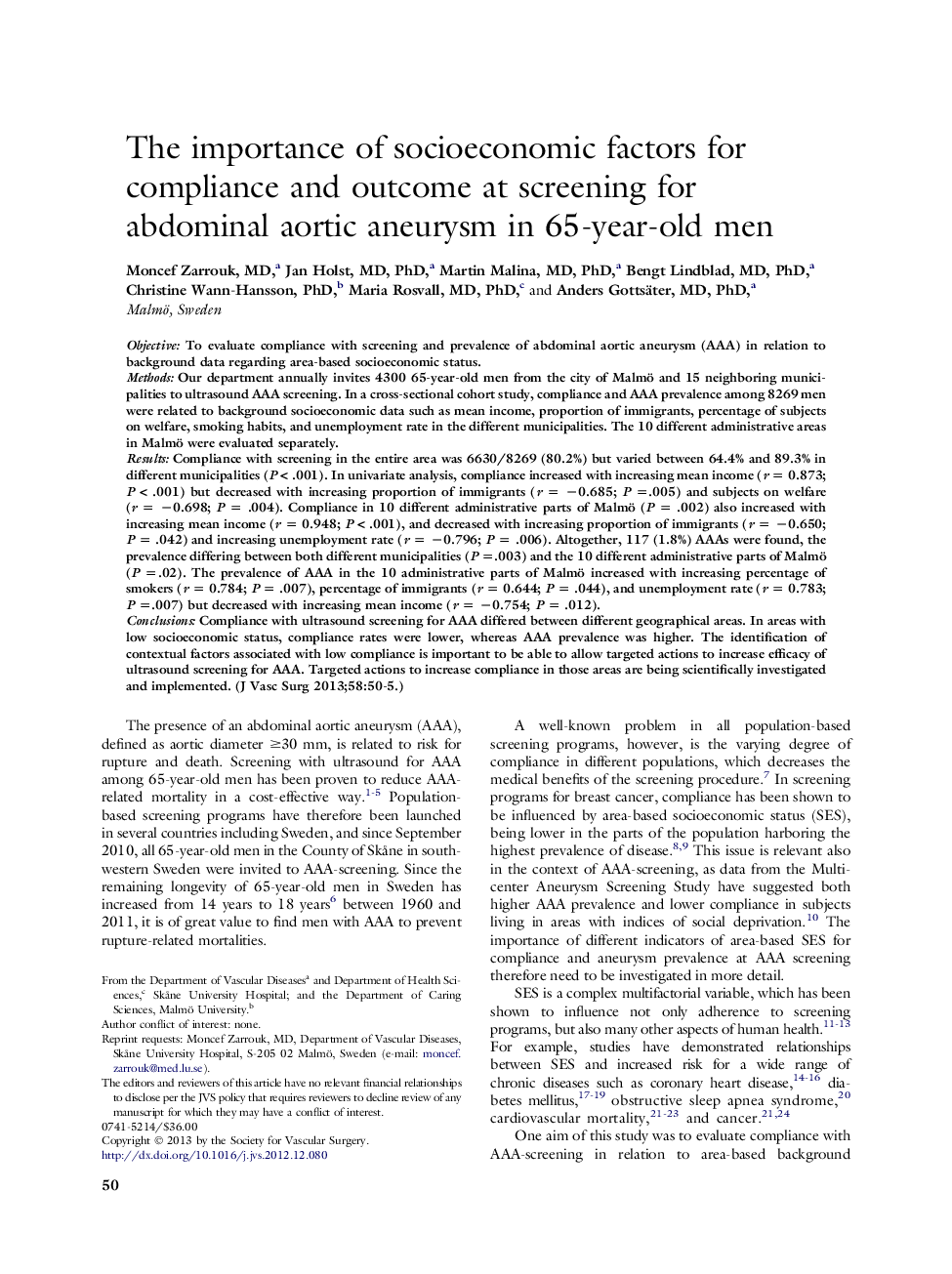| Article ID | Journal | Published Year | Pages | File Type |
|---|---|---|---|---|
| 5995002 | Journal of Vascular Surgery | 2013 | 6 Pages |
ObjectiveTo evaluate compliance with screening and prevalence of abdominal aortic aneurysm (AAA) in relation to background data regarding area-based socioeconomic status.MethodsOur department annually invites 4300 65-year-old men from the city of Malmö and 15 neighboring municipalities to ultrasound AAA screening. In a cross-sectional cohort study, compliance and AAA prevalence among 8269 men were related to background socioeconomic data such as mean income, proportion of immigrants, percentage of subjects on welfare, smoking habits, and unemployment rate in the different municipalities. The 10 different administrative areas in Malmö were evaluated separately.ResultsCompliance with screening in the entire area was 6630/8269 (80.2%) but varied between 64.4% and 89.3% in different municipalities (P < .001). In univariate analysis, compliance increased with increasing mean income (r = 0.873; P < .001) but decreased with increasing proportion of immigrants (r = â0.685; P =.005) and subjects on welfare (r = â0.698; P = .004). Compliance in 10 different administrative parts of Malmö (P = .002) also increased with increasing mean income (r = 0.948; P < .001), and decreased with increasing proportion of immigrants (r = â0.650; P = .042) and increasing unemployment rate (r = â0.796; P = .006). Altogether, 117 (1.8%) AAAs were found, the prevalence differing between both different municipalities (P =.003) and the 10 different administrative parts of Malmö (P =.02). The prevalence of AAA in the 10 administrative parts of Malmö increased with increasing percentage of smokers (r = 0.784; P = .007), percentage of immigrants (r = 0.644; P = .044), and unemployment rate (r = 0.783; P =.007) but decreased with increasing mean income (r = â0.754; P = .012).ConclusionsCompliance with ultrasound screening for AAA differed between different geographical areas. In areas with low socioeconomic status, compliance rates were lower, whereas AAA prevalence was higher. The identification of contextual factors associated with low compliance is important to be able to allow targeted actions to increase efficacy of ultrasound screening for AAA. Targeted actions to increase compliance in those areas are being scientifically investigated and implemented.
